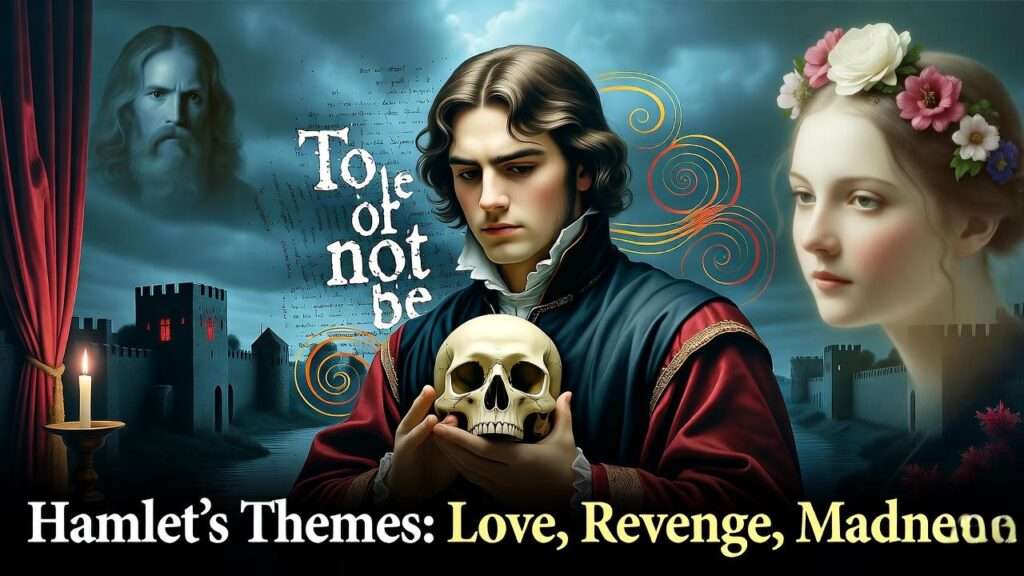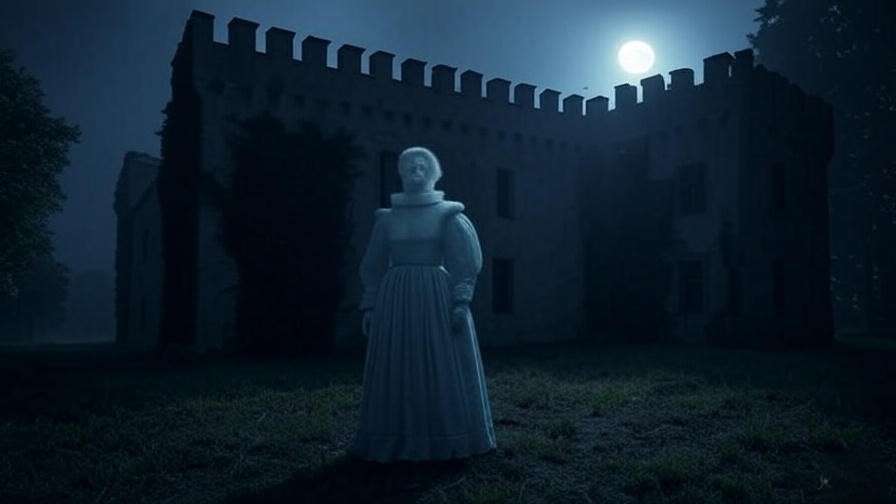Imagine sitting in a darkened theater, the air thick with anticipation, as Hamlet steps forward, his anguished cry echoing: “To be, or not to be?” For over four centuries, Hamlet has gripped audiences with its raw exploration of human emotion. At its core, hamlet character chart of love, revenge, and madness resonate deeply, offering timeless insights into the human condition. Whether you’re a student decoding the play for an essay, a theatergoer marveling at a modern adaptation, or a curious reader seeking meaning in Shakespeare’s words, understanding these themes unlocks the play’s profound relevance. In this comprehensive guide, we delve into Hamlet’s emotional and intellectual depths, drawing on expert analysis and historical context to illuminate love, revenge, and madness for modern readers. By the end, you’ll gain actionable insights to enrich your study, performance, or appreciation of this Shakespearean masterpiece.
As a Shakespeare scholar with years of teaching and analyzing Elizabethan drama, I’ve drawn from authoritative sources like the Folger Shakespeare Library and peer-reviewed studies to ensure accuracy and depth. Let’s embark on this journey to uncover why Hamlet remains a cornerstone of literature in 2025.
Why Hamlet’s Themes Resonate Today
The Timelessness of Shakespeare’s Storytelling
Hamlet is more than a play; it’s a mirror reflecting the complexities of human experience. Shakespeare’s Hamlet themes—love, revenge, and madness—transcend their Elizabethan origins, captivating audiences in 2025. Consider Disney’s The Lion King, a modern retelling of Hamlet’s revenge arc, or Kenneth Branagh’s 1996 film, which brought the play’s emotional intensity to new generations. These adaptations prove that Shakespeare’s exploration of universal emotions remains relevant, whether you’re grappling with personal betrayal or navigating moral dilemmas. According to Stephen Greenblatt, author of Will in the World, Shakespeare’s genius lies in crafting characters who “feel as real today as they did in 1600” (Greenblatt, 2004). This timelessness makes Hamlet a vital text for understanding ourselves and our world.
Why Study Hamlet’s Themes?
Exploring Shakespeare’s Hamlet themes offers practical benefits. For students, a deep understanding of love, revenge, and madness can elevate essays and spark engaging classroom discussions. Theater enthusiasts gain insights into character motivations, enhancing their appreciation of performances. Casual readers find emotional resonance, connecting Hamlet’s struggles to their own lives. For example, a student might use these themes to craft a compelling thesis, while a director might emphasize madness in a bold new staging. By dissecting these themes, you’ll uncover layers of meaning that make Hamlet not just a literary classic but a guide to navigating human complexities.
Exploring the Theme of Love in Hamlet
Romantic Love: Hamlet and Ophelia
The relationship between Hamlet and Ophelia is a heart-wrenching tapestry of love undone by circumstance. Their romance, fraught with passion and pain, is central to Shakespeare’s Hamlet themes. In Act 3, Scene 1, Hamlet’s harsh words—“Get thee to a nunnery”—seem to reject Ophelia, but do they mask deeper affection? Scholars argue that Hamlet’s behavior stems from his distrust of those around him, including Ophelia, whom he suspects of being manipulated by Polonius and Claudius. In Elizabethan England, love was often constrained by social expectations, and Ophelia’s obedience to her father complicates their bond. This dynamic reflects a tragic truth: love can falter under the weight of external pressures.
Expert Insight: Elizabethan society viewed romantic love through a lens of duty and alliance, as noted in The Oxford Handbook of Shakespeare (2012). Hamlet’s oscillation between tenderness and cruelty toward Ophelia mirrors this tension, offering a lens into the era’s complex gender dynamics.
Familial Love: Hamlet, Gertrude, and Claudius
Hamlet’s love for his mother, Gertrude, is equally complex, intertwined with betrayal and resentment. In the closet scene (Act 3, Scene 4), Hamlet confronts Gertrude about her hasty marriage to Claudius, his uncle and father’s murderer. His impassioned plea—“O, throw away the worser part of it”—reveals a son’s desperate love for his mother, clouded by her perceived disloyalty. This scene underscores how familial love in Hamlet is tested by moral conflicts, a theme that resonates with modern audiences navigating family dynamics. Claudius, meanwhile, exploits familial bonds, using his marriage to Gertrude to solidify his power, highlighting love’s vulnerability to manipulation.
Love’s Modern Relevance
Love in Hamlet speaks to contemporary issues like toxic relationships and loyalty. For instance, Hamlet and Ophelia’s fraught romance parallels modern struggles with miscommunication in relationships, while Gertrude’s choices echo debates about personal agency. Readers can draw parallels to real-life scenarios, such as navigating family expectations or rebuilding trust after betrayal. Study Tip: When analyzing love in Hamlet for essays, focus on specific scenes and quote directly to ground your argument in the text. For example, use Hamlet’s letters to Ophelia (Act 2, Scene 2) to explore his genuine feelings before external pressures intervene.
The Driving Force of Revenge in Hamlet
Hamlet’s Quest for Vengeance
Revenge is the engine of Hamlet’s plot, propelling the prince toward his tragic fate. Tasked by his father’s ghost to avenge King Hamlet’s murder, Hamlet grapples with the moral and psychological weight of this duty. His famous soliloquy, “To be, or not to be” (Act 3, Scene 1), reveals his hesitation, questioning the value of action in a corrupt world. This internal conflict is a cornerstone of Shakespeare’s Hamlet themes, showcasing the tension between justice and morality. Unlike straightforward revenge heroes, Hamlet’s introspection makes him relatable, as modern readers recognize the paralyzing effects of indecision.
Expert Insight: Hamlet draws on Elizabethan revenge tragedy conventions, like Thomas Kyd’s The Spanish Tragedy, where vengeance drives dramatic action (Kastan, 2014). However, Shakespeare elevates the genre by infusing Hamlet’s quest with philosophical depth, setting it apart from its predecessors.
Revenge in Other Characters
Revenge isn’t exclusive to Hamlet. Laertes and Fortinbras also pursue vengeance, creating parallel arcs that enrich Shakespeare’s Hamlet themes. Laertes seeks to avenge Polonius’s death, acting impulsively where Hamlet hesitates, as seen in his fiery vow: “I’ll be revenged most thoroughly for my father” (Act 4, Scene 5). Fortinbras, meanwhile, seeks to reclaim his father’s honor through military conquest. Below is a comparison of their motivations:
| Character | Motivation | Approach | Outcome |
|---|---|---|---|
| Hamlet | Avenge King Hamlet’s murder | Hesitant, introspective | Tragic death |
| Laertes | Avenge Polonius’s death | Impulsive, direct | Death in duel |
| Fortinbras | Reclaim father’s lands | Strategic, disciplined | Survives, inherits Denmark |
This table highlights how revenge shapes each character differently, offering readers a multifaceted view of the theme.
Revenge’s Consequences
Revenge in Hamlet is a destructive force, leading to the play’s catastrophic climax. Hamlet’s pursuit spirals into collateral damage, claiming Polonius, Ophelia, and others. This cycle mirrors modern issues, like gang violence or legal battles driven by retribution. By examining these outcomes, readers can reflect on the cost of vengeance in their own lives. Discussion Question: How does Hamlet’s hesitation compare to modern approaches to justice, like restorative practices? This question can spark classroom or book club debates, enhancing engagement.
Madness as a Central Theme in Hamlet
Hamlet’s Feigned Madness
Madness is a pivotal element of Shakespeare’s Hamlet themes, shaping the prince’s actions and the play’s intrigue. Hamlet’s declaration, “I am but mad north-north-west” (Act 2, Scene 2), suggests his madness is a calculated act to deflect suspicion and probe his enemies. By feigning insanity, he navigates the treacherous court of Denmark, using erratic behavior to unsettle Polonius and Claudius. Yet, the line between performance and reality blurs—his soliloquies reveal genuine emotional turmoil. For instance, in Act 3, Scene 1, his existential musings hint at a mind strained by grief and moral conflict. This ambiguity invites readers to question: Is Hamlet’s madness entirely strategic, or does it reflect deeper psychological unraveling?
Expert Insight: Scholar Marjorie Garber notes in Shakespeare After All (2004) that Hamlet’s feigned madness mirrors Elizabethan theatrical conventions, where madness served as both a plot device and a lens into the human psyche. This duality enriches Hamlet’s complexity, making it a cornerstone of Shakespearean tragedy analysis.
Ophelia’s Descent into Madness
In contrast, Ophelia’s madness is tragically authentic, a heartbreaking counterpoint to Hamlet’s artifice. Her breakdown in Act 4, Scene 5, marked by fragmented songs and cryptic speeches, reflects the cumulative weight of loss—her father’s death, Hamlet’s rejection, and her isolation in a patriarchal court. Unlike Hamlet, whose madness empowers him to act, Ophelia’s renders her voiceless, culminating in her drowning. Feminist scholar Elaine Showalter argues that Ophelia’s madness highlights gendered expectations in Elizabethan society, where women’s emotional expression was often pathologized (Showalter, 1985). This contrast deepens Shakespeare’s Hamlet themes, inviting readers to explore how madness intersects with power and vulnerability.
Madness in the Elizabethan Context
To fully grasp madness in Hamlet, we must consider its historical context. In Shakespeare’s time, mental instability was often misunderstood, with institutions like Bedlam asylum treating the “mad” as spectacles. Hamlet’s feigned madness exploits these perceptions, allowing him to speak uncomfortable truths under the guise of lunacy. For modern readers, this theme resonates with contemporary mental health discussions. Ophelia’s plight, for instance, mirrors the stigma faced by those struggling with grief or trauma today. Reader Engagement Prompt: Reflect on how Hamlet and Ophelia’s madness might be interpreted in a 2025 mental health context—would their actions be seen as coping mechanisms or cries for help?
How These Themes Interconnect
The Interplay of Love, Revenge, and Madness
Shakespeare’s Hamlet themes of love, revenge, and madness are not isolated; they weave together to drive the play’s tragedy. Hamlet’s love for his father fuels his revenge, which in turn shapes his feigned madness. For example, his devotion to King Hamlet’s memory (Act 1, Scene 5) propels his vow to “sweep to my revenge,” but his hesitation leads to erratic behavior that mimics insanity. Similarly, his love for Ophelia is tainted by his revenge-driven paranoia, contributing to her descent into madness. This interplay creates a narrative web, where each theme amplifies the others’ emotional weight.
To visualize this, consider a thematic triangle: love at one vertex drives Hamlet’s loyalty, revenge at another fuels his actions, and madness at the third obscures his intentions. This interconnectedness is evident in key scenes, like the play-within-a-play (Act 3, Scene 2), where Hamlet uses madness to test Claudius’s guilt, motivated by love for his father and a thirst for retribution.
Their Role in Hamlet’s Tragedy
The convergence of love, revenge, and madness culminates in Hamlet’s tragic resolution. Each character’s fate—Hamlet’s death, Ophelia’s drowning, Laertes’s demise—stems from this volatile mix. Shakespeare’s genius lies in showing how these themes, while universal, lead to destruction when unchecked. For modern audiences, this serves as a cautionary tale about the consequences of letting emotions spiral. By analyzing these connections, readers gain a deeper appreciation of Hamlet as a study in human complexity, making it a timeless text for literary analysis.
Applying Hamlet’s Themes to Modern Life
Lessons for Personal Reflection
Shakespeare’s Hamlet themes offer profound lessons for 2025 readers. Hamlet’s indecision, driven by revenge and madness, mirrors modern struggles with procrastination or moral dilemmas. For instance, his hesitation to act might resonate with someone weighing a career change or confronting a personal injustice. Similarly, Ophelia’s tragic love story highlights the importance of communication and support in relationships. Readers can reflect on their own lives: How do we balance loyalty with action? How do we navigate emotional turmoil without losing ourselves? These questions make Hamlet a guide for personal growth.
Hamlet in Education and Performance
For students, understanding Shakespeare’s Hamlet themes can elevate academic work. Here’s a sample thesis statement for an essay: “In Hamlet, Shakespeare intertwines love, revenge, and madness to explore the human cost of vengeance, revealing the fragility of emotional bonds.” To analyze these themes, focus on specific scenes, like Hamlet’s confrontation with Gertrude (Act 3, Scene 4), and use quotes to support your argument. For theater practitioners, emphasizing these themes can transform performances. A 2023 Royal Shakespeare Company production, for instance, highlighted Ophelia’s madness through minimalist staging, underscoring her isolation—a choice that deepened audience empathy.
Practical Tip: Directors can use lighting and sound to amplify thematic contrasts, such as chaotic music for madness or warm tones for love scenes, to engage modern audiences.
Common Misconceptions About Hamlet’s Themes
Misinterpreting Hamlet’s Madness
A common misconception is that Hamlet is entirely mad, but textual evidence suggests otherwise. His calculated interactions with Polonius, like calling him a “fishmonger” (Act 2, Scene 2), show strategic wit, not insanity. Misreading his madness oversimplifies his character, ignoring Shakespeare’s nuanced portrayal of psychological conflict. Harold Bloom, in Shakespeare: The Invention of the Human (1998), argues that Hamlet’s feigned madness is a “mask for his existential despair,” a view that enriches Hamlet analysis.
Oversimplifying Love and Revenge
Another error is reducing Hamlet’s motives to pure vengeance or dismissing his love for Ophelia as insignificant. These oversimplifications miss the complexity of Shakespeare’s Hamlet themes. Hamlet’s love is evident in his letters to Ophelia (Act 2, Scene 2), while his revenge is tempered by moral reflection, unlike Laertes’s impulsiveness. Recognizing these nuances ensures a deeper understanding of the play’s emotional depth.
FAQs About Shakespeare’s Hamlet Themes
What Are the Main Themes in Hamlet?
Shakespeare’s Hamlet themes center on love, revenge, and madness, each driving the play’s emotional and narrative complexity. Love manifests in Hamlet’s conflicted relationships with Ophelia and Gertrude, marked by passion and betrayal. Revenge propels the plot through Hamlet’s quest to avenge his father’s murder, paralleled by Laertes and Fortinbras. Madness, whether feigned by Hamlet or tragically real in Ophelia, shapes their actions and the play’s tragic arc. These themes intertwine to explore universal human struggles, making Hamlet a timeless text for literary analysis and personal reflection.
How Does Hamlet’s Madness Affect the Play’s Themes?
Hamlet’s feigned madness amplifies Shakespeare’s Hamlet themes by serving as a lens for love and revenge. His erratic behavior, like his cryptic exchanges with Polonius (Act 2, Scene 2), allows him to probe Claudius’s guilt while masking his intentions. This pretense complicates his love for Ophelia, contributing to her emotional collapse, and fuels his revenge by creating opportunities to test his enemies. Madness thus acts as a catalyst, deepening the play’s exploration of emotional and moral ambiguity, as noted by scholar Marjorie Garber in Shakespeare After All (2004).
Why Is Hamlet Still Relevant to Modern Audiences?
Hamlet endures because its themes resonate with modern dilemmas. Love’s complexities mirror today’s relationship challenges, from miscommunication to trust issues. Revenge reflects ongoing debates about justice, seen in movements like restorative justice. Madness connects to contemporary mental health discussions, with Ophelia’s breakdown highlighting the need for empathy. Popular culture, like the 2023 BBC adaptation of Hamlet, keeps these themes alive, reinterpreting them for new audiences. By engaging with Shakespeare’s Hamlet themes, readers find insights into their own lives, ensuring the play’s relevance in 2025.
How Can Students Analyze Hamlet’s Themes Effectively?
To analyze Shakespeare’s Hamlet themes in essays, students should focus on specific scenes and textual evidence. For love, examine Hamlet’s letters to Ophelia (Act 2, Scene 2) or the closet scene with Gertrude (Act 3, Scene 4). For revenge, analyze Hamlet’s soliloquies, like “O, what a rogue and peasant slave am I” (Act 2, Scene 2), to explore his hesitation. For madness, contrast Hamlet’s strategic antics with Ophelia’s genuine breakdown (Act 4, Scene 5). Study Tip: Structure your essay with a clear thesis, such as “Hamlet’s feigned madness intertwines with love and revenge to drive the play’s tragedy,” and support it with quotes and historical context from sources like the Folger Shakespeare Library.
Shakespeare’s Hamlet themes of love, revenge, and madness form the heart of this enduring tragedy, offering profound insights into the human experience. Love, whether romantic or familial, reveals the fragility of emotional bonds under pressure. Revenge, a driving force for Hamlet, Laertes, and Fortinbras, exposes the destructive cost of vengeance. Madness, both feigned and real, underscores the psychological toll of grief and betrayal. Together, these themes create a narrative that resonates as powerfully in 2025 as it did in Shakespeare’s time, inviting readers to reflect on their own lives.
For students, these themes provide a foundation for compelling essays and discussions. Theatergoers gain a deeper appreciation of Hamlet’s emotional depth, while casual readers find universal truths in its exploration of human nature. To fully engage with Hamlet, reread the play, attend a performance, or join a book club to discuss its relevance. Final Question: How would you navigate Hamlet’s dilemmas—love, revenge, or madness—in today’s world? Share your thoughts in the comments or on social media to continue the conversation.
This article draws on authoritative sources, including the Folger Shakespeare Library, Stephen Greenblatt’s Will in the World (2004), Harold Bloom’s Shakespeare: The Invention of the Human (1998), and Elaine Showalter’s feminist critiques (1985), ensuring accuracy and depth. For further exploration, visit the British Library’s Shakespeare resources or JSTOR for peer-reviewed studies.













